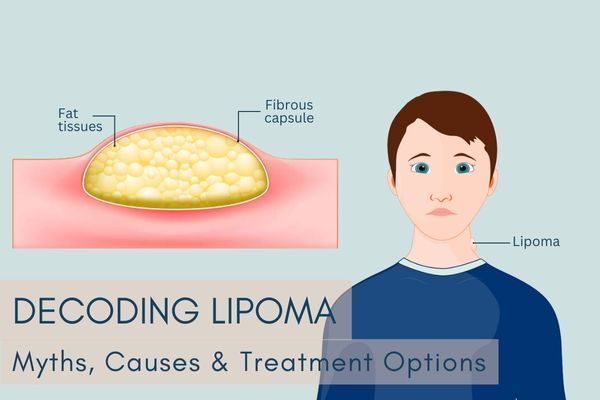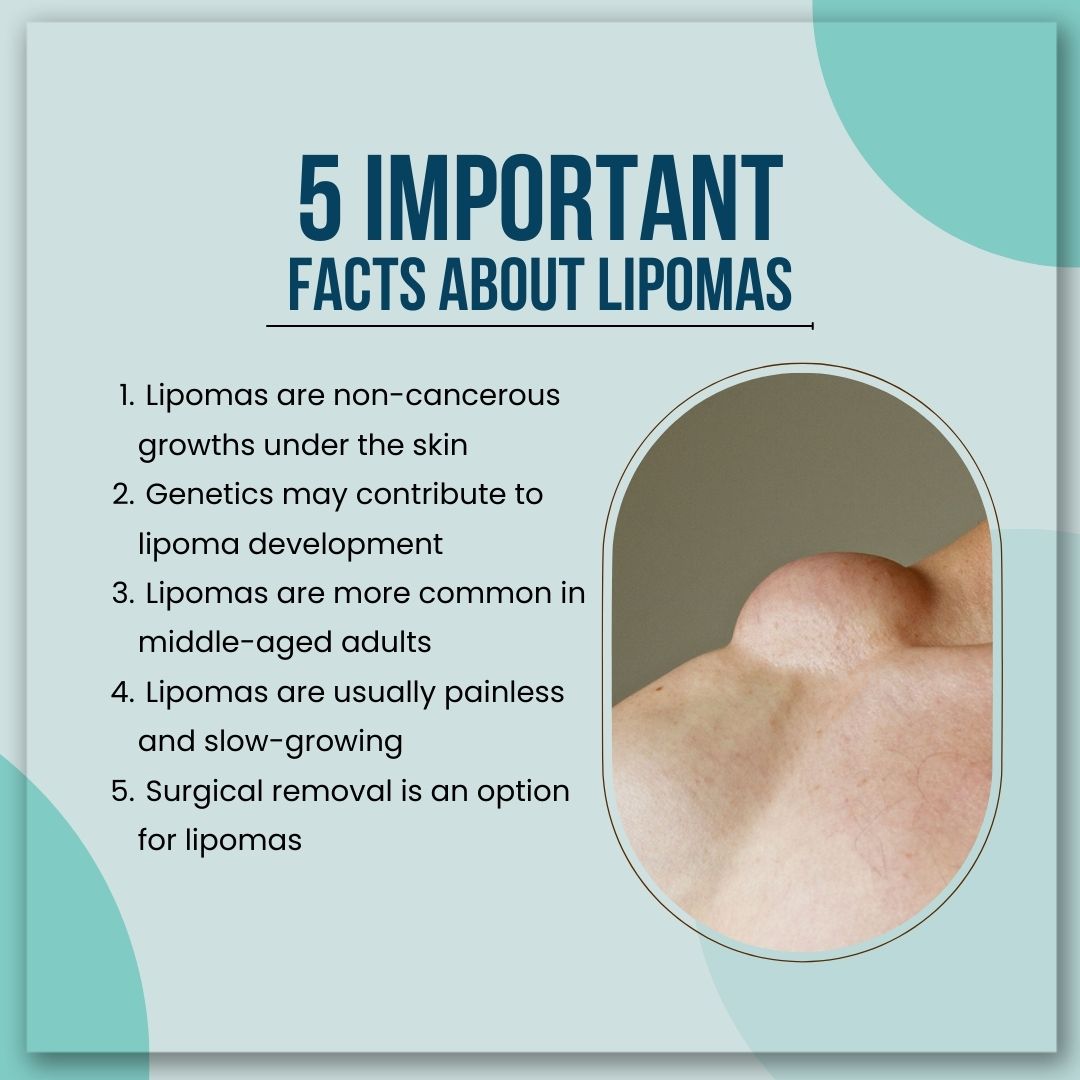
Lipomas are harmless lumps under the skin that are often confused with a great problem. In this blog, we aim to simplify what lipomas really are, dispel common misconceptions, understand why they happen, and explore different ways to treat them. We’ll also discuss why Dr. Jangid is considered the expert to go to for treating lipomas with care and effectiveness. So, let’s break down the facts and get a clearer picture of these little under-the-skin bumps. Read on:
What Are Lipomas?
Lipomas, at first glance, might instill fear due to their association with lumps beneath the skin. However, these growths are the benign tumors comprising fat cells. Generally soft, mobile, and slow-growing, lipomas can show up anywhere on the body. However, they are often found on the shoulders, neck, arms, thighs, and back.
What are Some Myths Surrounding Lipoma?
Fearing Cancer Concerns
One of the most prevalent myths is the association of all lumps with cancer. Lipomas, however, are non-cancerous, posing no threat to one’s health. It’s crucial to differentiate between benign lipomas and malignant tumors to alleviate unnecessary anxiety.
Dietary Practices
Another common misconception suggests that lipomas develop due to dietary habits. Despite the widespread belief, there is no conclusive evidence linking lipoma formation to specific foods or diets. Understanding this helps dispel unwarranted fears surrounding dietary practices.
What Causes Lipoma?
While the exact origin of lipomas remains hard to understand, several factors are believed to contribute to their development:
Genetics
A hereditary link to lipoma development suggests that certain families may have a predisposition to these benign growths. While specific genetic factors remain under exploration, understanding family medical history becomes crucial in identifying susceptibility. Research aimed at unraveling the genetic intricacies holds promise for more targeted prevention and treatment strategies in the future.
Aging Process
Lipomas are more frequently encountered in middle-aged adults, hinting at a correlation with the natural aging process. As the body undergoes changes in fat distribution and metabolism during this phase, it may create conditions favorable for lipoma development. This insight into age-related factors provides valuable context, aiding in the understanding of why lipomas are more prevalent during the middle years of life.
Gender Dynamics
The slightly higher prevalence of lipomas in men compared to women suggests potential gender-specific influences on their development. Hormonal variations, differences in fat distribution, or lifestyle factors may contribute to this observed gender disparity. Recognizing these nuances emphasizes the need for gender-specific considerations in both research and clinical approaches to effectively manage lipomas.
Injury or Trauma
The link between prior injury or trauma and subsequent lipoma development needs a closer examination of the body’s response to physical stress. Trauma to a specific area may disrupt the normal cellular environment, potentially triggering the overgrowth of fat cells characteristic of lipomas. Investigating the molecular and cellular mechanisms involved in this process offers insights into the aftermath of injury, informing preventive measures and tailored therapeutic strategies for individuals with a history of trauma.
Treatment Options for Lipomas
While lipomas often require no intervention, various treatment options are available for those seeking relief:
Surgical Removal
A minor surgical procedure is a common method for removing lipomas, providing a permanent solution. This option is often chosen when the lipoma causes discomfort or is aesthetically undesirable.
Liposuction
Liposuction offers a less invasive approach to removing lipomas, involving suctioning out the fatty tissue through a small incision.
Steroid Injections
In some cases, steroid injections can be employed to reduce the size of the lipoma. This non-surgical option may be suitable for those seeking alternatives to invasive procedures.
Why is Dr. Jangid the Best Doctor for Lipoma Treatment?
Dr. Jangid, a distinguished expert in dermatology and aesthetic medicine, stands out as a leading authority in lipoma treatment in Delhi. Several factors contribute to his reputation:
1. Expertise and Experience: A Legacy of Excellence
With years of specialized experience, Dr. Jangid brings unparalleled expertise to the field of dermatology and aesthetic medicine. His extensive knowledge ensures patients receive top-notch care and treatment.
2. Cutting-Edge Techniques
Dr. Jangid employs the latest techniques and technologies, ensuring that lipoma treatment is not only effective but also utilizes the most advanced medical innovations available.
3. Minimally Invasive Procedures
The use of minimally invasive procedures underscores Dr. Jangid’s commitment to patient comfort. These techniques minimize recovery time while maximizing the efficacy of treatment.
4. Patient-Centric Approach
Dr. Jangid’s patient-centric approach places individuals at the forefront of their treatment journey. Compassion, empathy, and a dedication to personalized care are the highlights of his practice.

Conclusion
Understanding the reality of lipomas, dispelling myths, and exploring treatment options empower individuals to make informed decisions about their health. With Dr. Jangid’s expertise and dedication, those seeking lipoma treatment can trust in a reliable and compassionate medical professional. By decoding the mysteries surrounding lipomas, we will help you find out the way for a clearer understanding and approach to managing these benign growths. Book your appointment today! Call or WhatsApp us at +91-92665 55500

